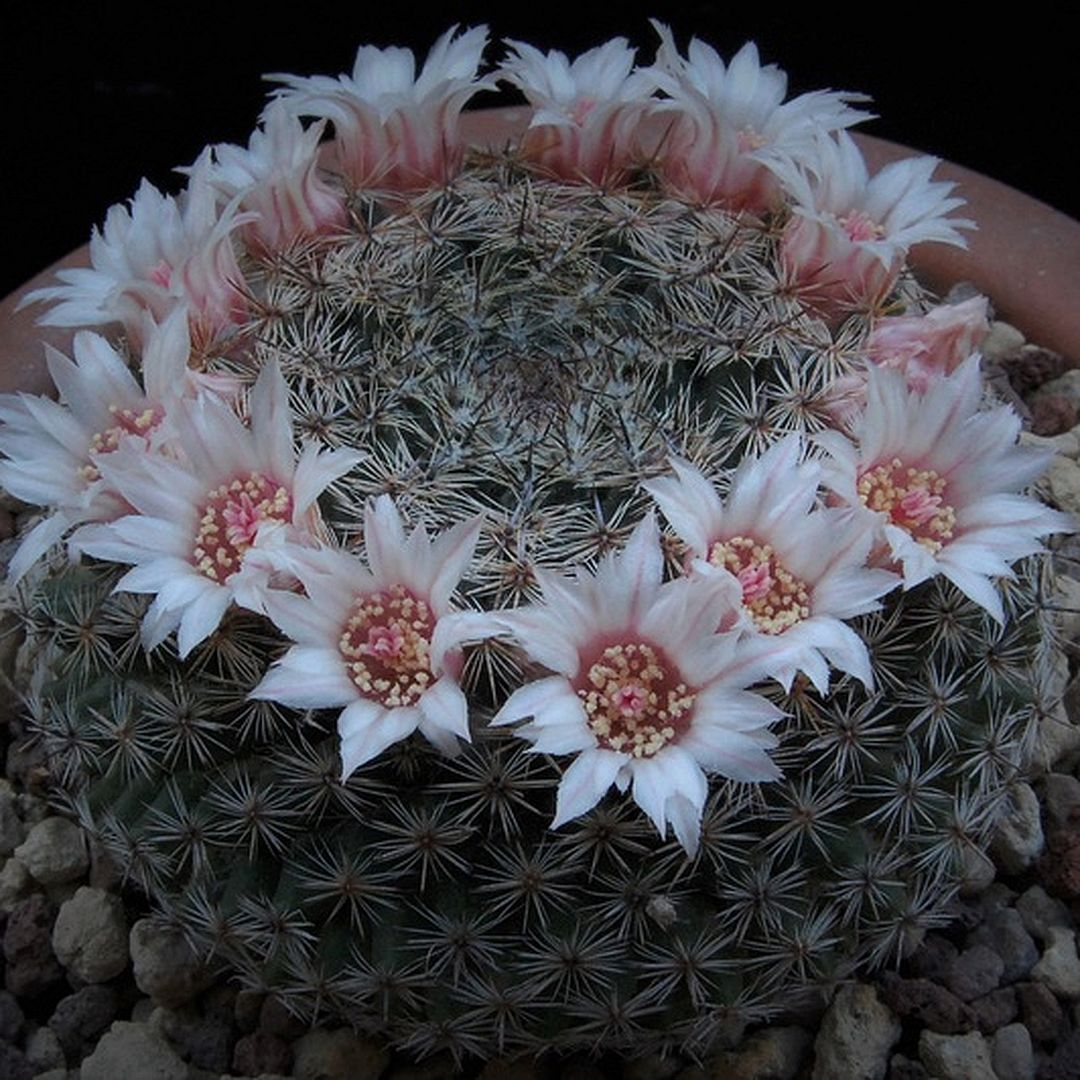Mammillaria formosa Galeotti ex Scheidw.

| Beschreibung | |
|---|---|
| Körper kugelig bis gestreckt, hellgrün, bis 8 cm Ø, später auch sprossend | |
| Warzen schlank-pyramidisch | |
| Axillen wollig | |
| Randstacheln 20 - 25, 3 - 6 mm lang, dünn, weiß | |
| Mittelstacheln 4 - 6, bis 8 mm lang, derbnadelig, fleischfarben, schwarzspitzig | |
| Blüten bis 1,5 cm lang und Ø, purpurrosa, Rand hell | |
| Früchte hellkarmin, 1,5 cm lang | |
| Samen hellbraun | |
| Vorkommen | |
|---|---|
| Mexiko (San Luis Potosi, San Felipe) | |
[1] Das Kakteenlexikon, Curt Backeberg, Gustav Fischer Verlag Jena, 3. Auflage 1976
Diese Art ist bestätigt als Mammillaria formosa.
Erstbeschreibung
Die Erstbeschreibung als Mammillaria formosa erfolgte 1838 durch den belgischen Botaniker Michael Joseph François Scheidweiler (1799-1861).
Zuerst beschrieben in: Bull. Acad. Roy. Sci. Bruxelles 5: 497 (1838)
Das Artepitheton formosa bedeutet ‚wohl gestaltet‘.
Homotypische Synonyme
- Cactus formosus (Galeotti ex Scheidw.) Kuntze in Revis. Gen. Pl. 1: 260 (1891)
- Neomammillaria formosa (Galeotti ex Scheidw.) Britton & Rose in Cact. 4: 90 (1923)
- Neomammillaria neoformosa (Galeotti ex Scheidw.) Y.Itô in Cactaceae: 588 (1981), without replaced synonym ref.